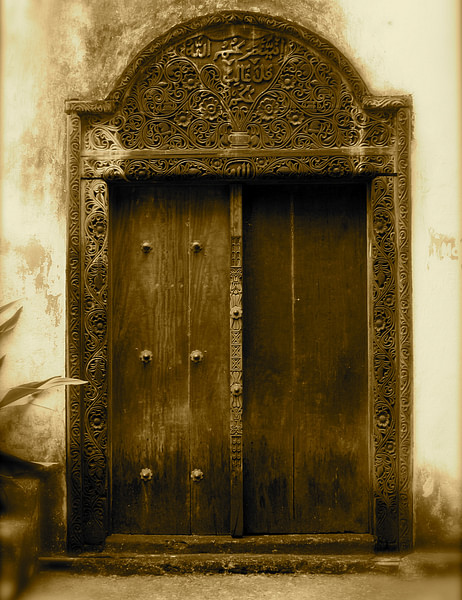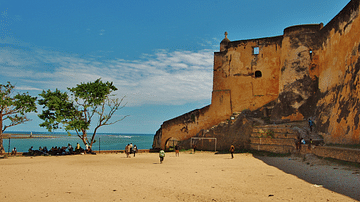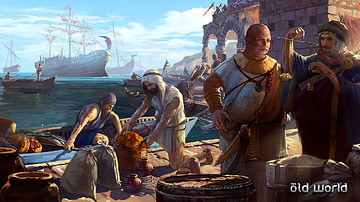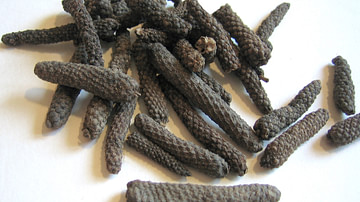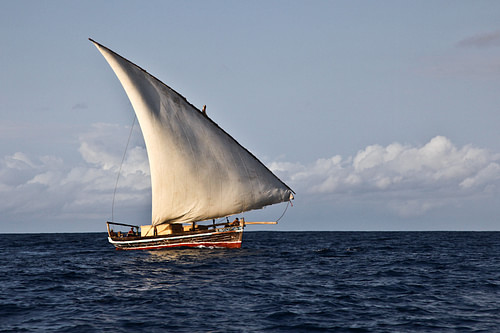
The Swahili Coast on the shores of East Africa was a region where Africans and Arabs mixed to create a unique identity from the 8th century called Swahili Culture. Swahili is the name of their language and means 'people of the coast.' The coast blossomed into a number of important, independent trading cities which included Mombasa, Mogadishu, and Zanzibar.
At their height from the 12th to 15th century, the Swahili Coast city-states traded with African tribes as far afield as Zimbabwe as well as the period's great trading nations across the Indian Ocean in Arabia, Persia, India, and China. The decline came in the 16th century with the arrival of the rapacious Portuguese who destroyed cities, built forts, and generally wrecked the finely balanced trade network they had come to gain advantage from.
Swahili
The term Swahili derives from the Arabic word sahil ('coast') and so means 'people of the coast'. It not only refers to the coastal region of East Africa from Mogadishu in Somalia at its northern end to Kilwa in the south but also to the language spoken there, a form of the indigenous African language Bantu, which emerged in the middle of the 1st millennium CE. Later, many Arabic terms were mixed in and Swahili became the lingua franca of East Africa, even if different dialects did develop. The language is still spoken today in East Africa, continues to acquire foreign loan words, and is the national language of Kenya and Tanzania.
Ancient Settlement
The ancient peoples of what would become the Swahili Coast prospered thanks to agriculture and animal husbandry, aided by a regular annual rainfall and shallow coastal waters plentiful in seafood. Trade, conducted by dugout canoes and small sailing vessels, first began up and down this coast between the Bantu farming peoples living there in the first centuries of the 1st millennium during the region's Iron Age. Sea travel was aided by the long lines of coral reefs which protect the shallow and calmer waters between them and the coastline as well as the presence of many coastal islands which provided both shelter and handy stopping off points en route. In addition, the coast of East Africa provides many excellent natural harbours formed by submerged former river estuaries.
Initially inhabiting the interior, Bantu people gradually moved in greater numbers to the coast as the second half of the 1st millennium wore on, creating over 400 new settlements and using stone - typically coral blocks held together with mortar - instead of or in addition to mud and wood for their homes. They profitably traded coastal commodities such as shell jewellery for agricultural products from the more fertile interior. When trade networks spread along the coast, so too ideas in art and architecture went with them, as did language, eventually spreading Swahili further afield to cover 1600 kilometres (1000 miles) of Africa's coastline, making contacts with Madagascar, an island with an already long history of cross-cultural contacts, including with Indonesia.
Arrival of Muslim Traders
From the 7th century, the number of traders sailing the Indian Ocean greatly expanded and included those from the Red Sea (and so Cairo in Egypt), and then Arabia and the Persian Gulf. Arab dhows with their distinctive triangular sails filled the ports of the Swahili coast. Trade was even carried on across the Indian Ocean with India and Sri Lanka, as well as China and Southeast Asia. The long-distance sea voyages were made possible by the alternation of monsoon winds which blew to the northeast in the summer months and which reversed in the winter months. Indeed, sea travel was a lot easier and a lot faster than land travel at this time. As these helpful winds were lighter and less reliable the further south one went, so too the settlements became smaller and less frequent down the southern coast of Africa.
From the mid-8th century, Muslim traders from Arabia and Egypt began to permanently settle in towns and trading centres along the Swahili coast, especially on the safer coastal islands. In the 12th century settlers came from Persia, known as Shirazi people. The indigenous Bantu and all these foreigners mixed, as did their languages, with intermarrying being common and a consequent blending of cultural practices which led to the evolution of an entirely unique Swahili culture.
Medieval Trading Cities
The most important of over 35 major city-states along the Swahili Coast were (from north to south):
- Mogadishu
- Merca
- Barawa (aka Brava)
- Kismayu
- Bur Gao (aka Shungwaya)
- Ungwana
- Malindi
- Gedi
- Mombassa
- Pemba
- Zanzibar
- Mafia
- Kilwa
- Ibo
- The Comoro Islands
- Mozambique
- The northern tip of Madagascar
These city-states, with the exception of Mogadishu, rarely exerted any form of wider political control beyond their immediate vicinity. Neither was there even very much cultural influence over the mainland interior. As many cities could not produce enough food, though, there must have been some arrangement with local tribes on the mainland who provided sorghum grain, rice, bananas, yams, coconuts, and more.
Trade
Goods which came to the Swahili city-states were collected from Africa's interior, including southern Africa where Kilwa had a trade emporium, Sofala, near the kingdom of Great Zimbabwe (c. 1100 - c. 1550). These goods could be consumed in the cities themselves, passed on to other African communities (after payment of duties to the cities' rulers) or exported away from the continent by sea. In the other direction, goods came from Arabia, Persia, and India - and through these places, from China and Southeast Asia. Again, the foreign products were both consumed in the Swahili city-states and traded on to African settlements throughout East and southern Africa. Finally, Swahili city-states also manufactured goods for both their own residents and for trade such as pottery, cloth, and highly decorated siwa, the typical brass trumpet of the region.
Goods from Africa included:
- Precious metals - gold, iron, and copper
- Ivory
- Cotton cloth
- Pottery
- Tortoise shells (principally to make combs)
- Timber (especially mangrove poles)
- Incense (e.g. frankincense and myrrh)
- Spices
- Rock crystal
- Salt
- Grain & Rice
- Hardwoods (e.g. sandalwood and ebony)
- Perfumes (e.g. ambergris which is derived from sperm whales)
- Rhino horns
- Animal hides (e.g. leopard skins)
- Slaves
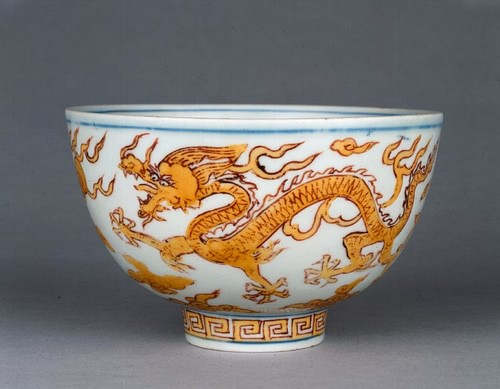
Goods imported from outside Africa included:
- Ming porcelain
- Pottery from Muslim states
- Precious metal jewellery
- Silk and other fine cloths
- Glassware
- Glass beads
- Faience
Merchants exchanged these goods in a system of barter where one commodity was exchanged for another, but some of the larger cities like Kilwa were able to mint their own copper coinage from the 11th or 12th century. There were also commonly agreed upon currency commodities such as copper ingots or cowrie shells.
Government & Society
Swahili cities were independent from each other and usually governed by a single ruler, but details of how these were chosen are lacking besides some cases of one ruler nominating his successor. By the 12th century, the cities were ruled by the affluent Muslim merchant class. Assisting the single ruler or sultan were various officials such as a council of advisors and a judge, who were all likely selected from the most powerful merchant families.
The social structure of the city-states generally had three levels. The ruling class - governors, merchants, craftworkers and holders of religious office - was composed of those with a mixed Arab and African ancestry. The second group was made up of slaves who were native Africans of unmixed ancestry and the third group was Arab and Persian traders who had not settled permanently.
Islam
Islam came to the coast with Arab traders in the 7th century, but the earliest known mosques, built of wood, are at Tanga, Kenya and date to the 9th century. Initially, some unorthodox Muslim settlers may have fled persecution in their homeland, but from the 12th century, the form of Islam most practised along the Swahili Coast was Sunni.
As the historian P. Curtin puts it: "The Muslim religion ultimately became one of the central elements of Swahili identity. To be a Swahili, in later centuries, meant to be a Muslim" (125). There were, though, differences in the practicalities of daily worship between Swahili Muslims and those elsewhere. For example, for many Muslim converts, the practice of appeasing spirits who brought illness and other misfortunes continued, as did the worship of ancestors, and in some places, women enjoyed better rights than they did under strictly sharia law. Swahili cities had cemeteries, and many tombs therein, besides having the unique commemoration of a single stone column, also contained precious goods along with the deceased, a very un-Islamic practice.
Architecture
Swahili mosques were smaller than elsewhere in the Muslim world and given very little decoration. With the exception of two 13th-century CE mosques at Mogadishu, Swahili Coast mosques do not have minarets and none have the inner courtyard typical of mosques elsewhere. One of the best surviving monuments on the Swahili coast is the Great Mosque at Kilwa. Constructed from coral rock blocks in the 14th century and added to in the subsequent century, the structure incorporated parts of an earlier mosque of the 10th-11th century. It has impressive monolithic coral columns which support a high vaulted ceiling, octagonal columns creating 30 arched bays, and a 4-metre (13 ft) square room with a domed roof.
Also at Kilwa are the ruins of a large palace, the Husuni Kubwa Palace ('Large Fort' in Swahili), built in the 1320-30s and located on a sandstone promontory. Covering almost 10,000 square metres (1 hectare), it includes a spacious audience hall, courtyard with tiered seating or steps, domed ceilings, storerooms (covering half of the palace's area), and a pool. Although the architecture is similar to buildings seen in Aden with its domes, pavilions, and barrel vaults, the Kilwa architects added their own unique twist by embedding pieces of Chinese porcelain into the white lime plaster of the exterior walls for decorative effect. The palace, Great Mosque, and general attention to architecture at Kilwa led the Moroccan explorer and traveller Ibn Battuta (1304 - c. 1368), who visited c. 1331, to famously describe it as "one of the most beautiful towns in the world" (quoted in Spielvogel, 233).
Domestic housing along the Swahili Coast typically consisted of rectangular wattle-and-daub or mud-brick buildings with palm-leaf gabled roofs. Better housing, such as found at Kilwa, was made from stone and mostly of one storey. Swahili stone houses typically have two very long but narrow rooms (their width was limited by the length of mangrove poles needed to support the coral roofing) with few windows making their interiors dark but cool. There are smaller private chambers with many wall niches set at the back, there is often an inner courtyard with large windows and a toilet chamber and washrooms. Decoration was achieved by adding carved wooden window and door frames, window grilles, or even setting rows of porcelain bowls into the ceilings. Larger houses had well-watered gardens and orchards. Buildings were constructed very close together, often sharing a wall, and so cities often had very narrow and maze-like streets.
The Arrival of the Portuguese & Decline
The beginning of the end for the Swahili city-states was the arrival of one Vasco da Gama in 1498-9. The Portuguese explorer had audaciously sailed around the Cape of Good Hope and up the east coast of Africa. Those who followed in his wake sought one thing: total control of the Indian Ocean trade network. With inferior weapons and a lack of cooperation between city-states, the Swahili Coast was not able to put up much of a defence.
The Portuguese had a large base at Goa, India, and they were hopeful of controlling both sides of the Indian Ocean. By building fortresses, notably at Sofala in 1505, Mozambique Island in 1507, and Shama in 1526, they at least ensured they were in East Africa to stay. Unfortunately for everyone, the Europeans had no interest in establishing any mutually beneficial trade arrangements with the Swahili cities or interior African kingdoms, nor did they establish any form of administration. They merely wanted to extract everything and anything of value at as little cost as possible, preferably zero. Any rival traders were blown out of the water, their cities razed, and trade goods stolen.
The result of the Europeans' rather short-sighted policy in East Africa, with additional contributing factors of their basic lack of manpower and corrupt incompetence, was that regional trade merely shifted northwards to avoid them. The Portuguese eventually responded by trying to grab the goods at the source, and one of these, noted for its gold, was the kingdom of Mutapa in modern Zimbabwe. Conquering the kingdom around 1633, the Europeans were disappointed to discover there was not all that much gold about, certainly not in comparison to West Africa and Inca Peru. Tired of the terrible mortality rates caused by tropical diseases, they left northern and central East Africa to its own devices and concentrated on Mozambique, but not before causing such disruption that the heyday of the Swahili Coast was put to an end. Some city-states did, though, carry on trading into the 18th century under the control of the Omani Empire, becoming major exporters of slaves and ivory.


